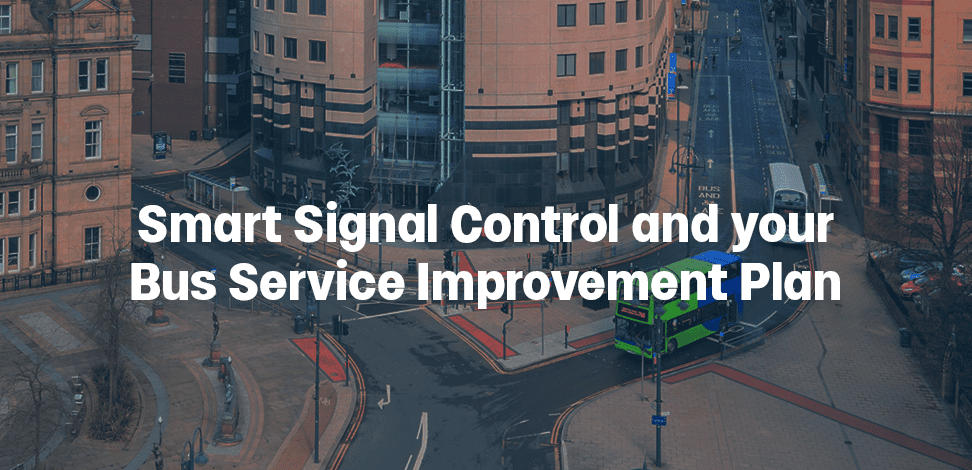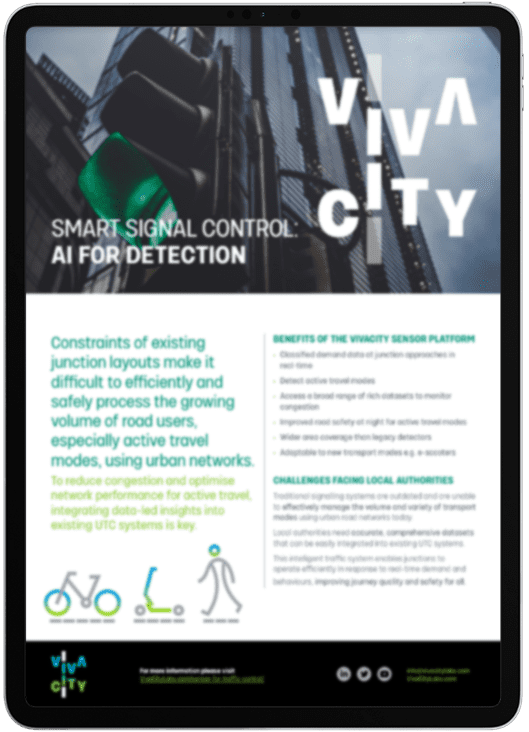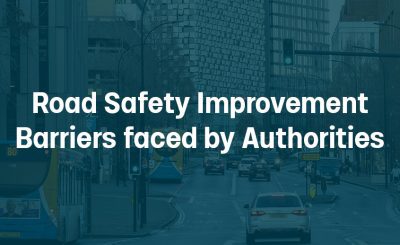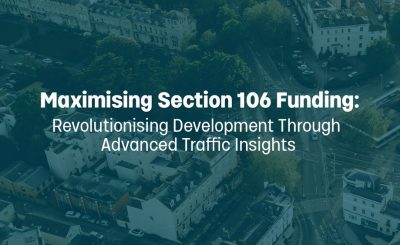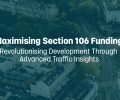Local Transport Authorities can benefit from VivaCity transport data in the development and implementation of Bus Service Improvement Plans (BSIP), as part of the Government’s National Bus Strategy.
- Gather data on current bus service performance
- Implement responsive bus prioritisation signalling
- Support broader sustainable transport and decarbonisation strategies
Bus service performance improvement strategies
Key to decarbonising the road network and achieving Net Zero, increasing bus use is also fundamental to levelling up. Good bus services support town centres, connecting people to jobs and strengthening communities. Bus journeys commonly form a part of multimodal trips. Therefore, improving bus service performance must be approached holistically, with the broader transport context in mind.
VivaCity’s vision-based above ground sensors equip Local Transport Authorities with high quality data on bus service and overall transport network performance. This evidence-based understanding of how bus journeys feed into overall network efficiency can be used to identify key areas for bus service improvement and to measure the success of interventions and resulting shifts in modal share.
Using multimodal data to improve bus service performance
1. Make buses the priority: responsive bus prioritisation with VivaCity’s latest Smart Signal Control offering
Studies have shown that the major barriers to bus travel is service inconsistency, with passengers’ top priority for improvements being punctuality and reliability. Congestion is considered to be a key factor of bus use decline.
In addition to providing highly accurate multimodal transport monitoring data, VivaCity’s latest Smart Signal Control product, takes one step further. Detect, integrates real-time data into existing traffic control systems. This capability enables effective, responsive and efficient bus prioritisation through key junctions governed by real-time demand.
Detect improves bus service performance in Leeds
In Leeds, over 180 Smart Signal Control: Detect sensors across 25 sites are enabling the city to tackle congestion. Integrating multimodal detection data into Leeds City Council’s existing control systems is enabling more dynamic and responsive signal control and less stop-start traffic. Leeds is using this integration to improve bus journeys by prioritising buses at key junctions.
“We’re seeing real potential for this technology to improve our bus network because it will enable us to prioritise buses at junctions more effectively at crucial times of the day.”
Joel Dodsworth, Urban Traffic Management & Control Manager at Leeds City Council
Detect can support other sustainable travel too. For example, the same system can be set to prioritise cyclists at junctions, with the ability to detect cyclists approaching the crossing from up to 70 metres away and providing a green signal for their arrival.
2. Baseline data: assess current performance to design your improvement plan
Gather high quality baseline data for an in depth understanding of bus service performance based on empirical evidence. This data can be combined with responses from passenger user groups to understand what factors are preventing wider bus use. Datasets of particular relevance to the development of BSIP include:
- Average bus speed data that can be compared across the day, week and month
- Dwell Time data to quantify congestion and identify trends across the day, week and month
- Anonymised active travel path (Tracks) data to understand how connections are made between bus travel, walking and cycling hubs. This data can also be useful to understand how pedestrians navigate to and from bus stops and whether designated crossing points would enable easier transition between modes.
In addition, with VivaCity’s Trend Analysis feature you can select specific date ranges, time aggregations and filter for buses or other modes of transport to identify long-term trends. This means you can easily identify significant changes to bus service performance over time within a broader transport context.
Target setting
Long-term baseline data will support the setting BSIP targets for journey time and service reliability. Ongoing monitoring data for journey times, average speed and congestion can be easily gathered and used in regular reporting and for benchmarking.
3. Modal shift: Measure BSIP impact as part of wider sustainability strategy
The overarching ambition of BSIP is for bus travel to become the transport of choice and not secondary to the car. VivaCity’s high quality multimodal data is ideal for illustrating shifts in modal share as a result of BSIP implementation.
Comparing data on privately owned vehicle volumes before and after bus prioritisation is one way of correlating BSIP success. There may also be correlations between cycling and e-scooter usage alongside improvements in bus services, as people opt for journeys that consist of multiple stages and modes.
Like our content? Sign up to our newsletter and receive the latest updates in your inbox.
Sign-Up
